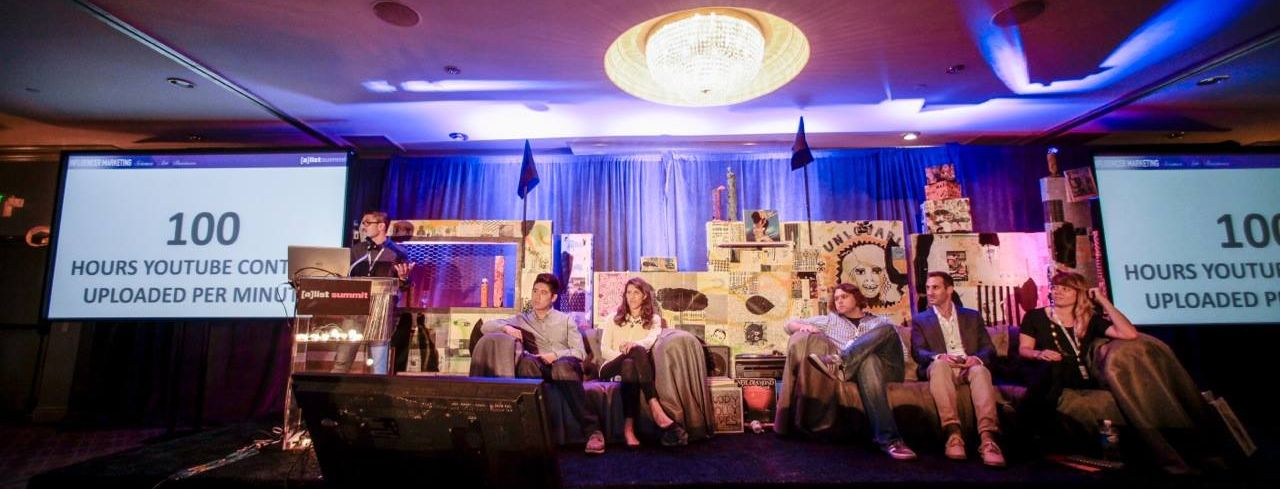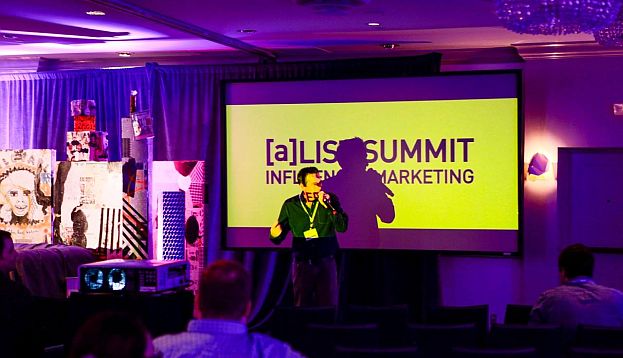The [a]list summit on Influencer Marketing took place last Thursday, and it was an amazing day crammed with information. The array of speakers brought a variety of perspectives to the topic, and most came well-armed with facts, figures and insights about the growing role of influencers in marketing. What follows are some of the key learnings attendees took away from the summit.
The scope of influencer marketing is amazing, and particularly so when you consider how quickly the field has blossomed. Certainly the growth of YouTube is a key factor here, with YouTube currently clocking in with over 100 hours of video being posted every minute. That’s only part of the way influencers reach their audiences, though. The tools are YouTube and Twitch, but also Twitter, Instagram, Vine, Pinterest and of course Facebook. Here’s a key fact for you: There are over 1 million influencers with a substantial audience, and the number is growing.
At the top end, the reach of influencers is astounding if you haven’t been paying close attention. The top YouTuber is Felix Kjellberg, AKA PewDiePie, and he notched an incredible 351 million page views in June from his network of over 29 million subscribers. By way of comparison, the top networks (CBS and NBC) get around 5 million viewers per week. You can see why Disney paid $500 million for Maker Studios (where PewDiePie is signed), and why marketers everywhere are interested in influencers.
Another interesting fact to note, especially for game companies, is that 8 out of the top 10 YouTubers are doing their videos based around gaming. Perhaps that’s not too much of a surprise, given how much the demographic for YouTube viewing overlaps the demographic for game playing. Still, it’s another testament to the extraordinary reach and influence of gaming in the popular culture. This may be a surprise to long-time marketers who have thought of games as something relegated to a fanatic faction of the marketplace.
As with mobile advertising, marketers and budgets have yet to embrace influencer marketing to the degree it deserves given the clout influencers have, both in the scope of the audience and the depth of the influence they wield. The summit’s presenters had plenty of great examples of how influencers delivered great results for brands. And it’s not just in terms of impressions, either, but solid sales results.
If influencer marketing is that effective, why aren’t more marketing plans including budget for that? There are several reasons. Part of it is technical, with a lack of really good ways to use it simply, and part of it is awareness. Other forms of marketing have been around long enough that the process is easy. You want a print No problem, the entire process from ad creation to placement is straightforward and easy to implement. Same with a TV commercial — everyone in the business knows how that process works. Get an influencer campaign going? Ummm, let me think… I’m not sure who to call, or where to start, or how long it will take or how much it will cost…

Services are still developing to help with all those questions for influencer marketing campaigns, and already there are people who have ready answers to all of those questions. It’s just not widespread yet, and the rapid development of influencer marketing is part of the problem. There just hasn’t been time enough to get the word out about it, and for marketers everywhere to know how it works. If you haven’t looked closely in the last year, the changes have been astounding. There will be tremendous growth in this area as services continue to develop and makes themselves known to marketers.
The summit was a great way to learn directly from influencers and brands how the process of creating an influencer marketing campaign works. One of the key messages from influencers rang out crystal clear: Hands off! Don’t script your campaign for the influencers. Influencers have their audience because it’s been a very personal thing. The influencer has built an audience (which can be in the millions) because of who they are, what they create, and how they choose to do it. If a brand steps in and says “Here’s what I want you to say and how you will say it,” that will immediately ring false to the influencer’s audience. The result is a failed campaign, and possible damage to the influencer as well. Savvy influencers won’t allow that, so brands must work together the the influencers to develop a campaign. That’s a hard lesson for some brands to learn, but learn it they must.
Another point that was implicit in the presentations is that the audience is gaining control of many brands now, and the influencers are the leading edge of this trend. Sure, brands can and do fight back and try to maintain control in many cases, but the power of social media is giving a voice and a way to connect for audiences that were once isolated from themselves. Now fans of a brand can talk to each other, and share thoughts about a brand, and create their own marketing pieces. Savvy brands are realizing the power of this and trying to ride the wave, while some brands just seems to have the waves breaking over their heads. Influencer marketing is a good way for brands to get involved with the audience and understand how the roles of brands and audiences are changing.
Influencer marketing is becoming a very important tool that brands can use. It’s clear that influencer marketing works best when it’s integrated into an overall marketing strategy. It’s also opportunistic —smart brand marketers are ready to seize opportunities that appear, and working with influencers is often a great way to capitalize on those opportunities.
One other things was very clear — influencer marketing is still growing and changing rapidly. There’s plenty of creativity happening in this space, and there’s plenty of opportunity for innovation. Every brand needs to be aware of influencer marketing and watching how it develops, because this is something every brand could benefit from.

